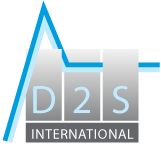Explicit Dynamics
Many real-world engineering situations involve severe loads applied over very brief time intervals. While testing is crucial to analyze these types of loading scenarios, it can be expensive and sometimes economically infeasible to conduct physical tests – you can’t build an oil tanker and then run it aground to check for oil spills, for example. Moreover, data from a single physical test can be insufficient and companies cannot afford to conduct several of them for more detailed information.
Hexagon (MSC Software) offers explicit dynamics solutions that can simulate the behavior of products from small components to extremely large assemblies to events such as a drop, ballistic impact, severe vibration, or blast, and help optimize your design to withstand it. Built-in multiphysics capabilities including fluid-structure interaction ensure accurate and efficient solutions for a wide range of real-world operating environments.
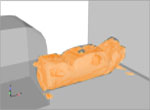
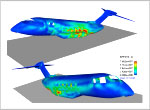
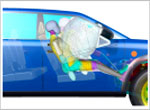
During transient crash or impact events, structures experience significantly large strains and may also undergo failure. Hence modeling material nonlinearities to include failure behavior is crucial for accuracy of simulation. Our solutions provide a vast set of constitutive models that help you model various engineering materials including metals, soils, concrete, composites, plastics, foam, fabric and more. Since failure mechanisms are unique to each of the material categories, several industry proven models with strong theoretical foundation are available. MD Nastran also offers unique capabilities in predicting failure of composites through micromechanical damage models which can be more accurate compared to traditional macromechanical failure models.
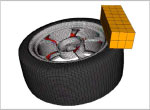
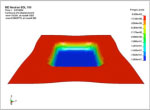
Interaction between multiple structures is an integral part of most nonlinear problems. Since the deformations of structures are typically large in crush and crash scenarios, they are also likely to experience self-contact because of folding or failure of a region. These scenarios are handled automatically while accounting for failure and breakage of material from the structure. Ease of contact set up also saves considerable time for users during pre-processing.
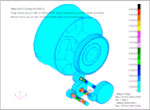
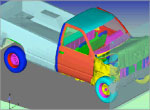
Performance and robustness of numerical methods
In the case of short, transient events like crush and crash, the element size and time step needs to be much smaller to capture the higher order modes effectively, leading to very large models. Explicit solutions are well suited for the models with several hundred thousands of elements with significant nonlinearity.
The parallel processing capabilities offered by Hexagon (MSC Software) enable you to take advantage of cheaper hardware to gain the most out of your software investments. Making use of MPI (Message Passing Interface) to communicate between multiple processors that may be on shared or distributed memory systems, our technology helps you conduct your virtual tests rapidly.

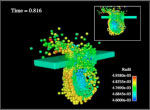
The objective of modeling fluids in a structural analysis is to account for the influence of fluid pressures on the structure and for improved accuracy in structural response prediction. Structures are generally modeled using Lagrangian scheme where material is tied to a finite element mesh. On the other hand, fluids are solved with Eulerian scheme with material being independent of the mesh, but instead flowing through the mesh. Dual schemes are required because of the way structures and fluids behave.
When fluids and structures need to be modeled in a single analysis, the challenge is running these different schemes in a single run. This is accomplished through an automatic coupling algorithm, where two meshes – one for structure and another for fluid, exist. A coupling surface is created between these two domains which acts as a boundary to the flow of material in Eulerian mesh, while enabling transfer of the stresses to the Lagrangian structural mesh causing it to deform.
With capabilities that include fluids and gases, explosion in addition to highly nonlinear structural materials, users can simulate complex models like airbags, gas tank sloshing, hydroplaning, underwater explosions, bottle filling etc
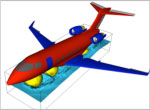
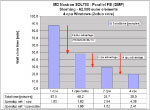
-
Aerospace & Defense: Bird strike, Blade-out, Blade containment, Ditching, Ballistic impact, Explosions, Aircraft crashworthiness, Seat design and safety
-
Automotive: Crash, Airbag deployment, Hood/door slam, Tire/road contact, hydroplaning, Fuel tank sloshing
-
Packaging: Drop test, Fluid-sloshing, Bottle filling, Can or container crush
-
Electronics: Drop test, Shipping safety
-
Energy: Wind turbine blade stability, Bird impact, Storage facility safety from explosions, Underwater explosions, Fluid sloshing, Nuclear cask transportation, Pipe impact
-
Government: Safety and defense, Earthquake studies
-
Heavy Equipment/Machinery: Gear failure, Crash and impact, Grinding mill (Mining Industry)
-
Medical: Equipment safety, Fluid containers, Drop test and impact
-
Shipbuilding: Underwater explosion, Crash
-
Transportation: Safety and crash, Fluid cargo transportation
Request information
D2S International offers consultancy services using finite element software from HEXAGON (MSC Software).
